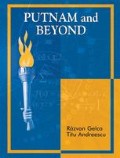Abstract
We conclude the book with combinatorics. First, we train combinatorial skills in set theory and geometry, with a glimpse at permutations. Then we turn to some specific techniques: generating functions, counting arguments, the inclusion-exclusion principle. A strong accent is placed on binomial coefficients.
This is followed by probability, which, in fact, should be treated separately. But the level of this book restricts us to problems that use counting, classical schemes such as the Bernoulli and Poisson schemes and Bayes’ theorem, recurrences, and some minor geometric considerations. It is only later in the development of mathematics that probability loses its combinatorial flavor and borrows the analytical tools of Lebesgue integration.
Access this chapter
Tax calculation will be finalised at checkout
Purchases are for personal use only
Preview
Unable to display preview. Download preview PDF.
Author information
Authors and Affiliations
Rights and permissions
Copyright information
© 2007 Springer Science+Business Media, LLC
About this chapter
Cite this chapter
Gelca, R., Andreescu, T. (2007). Combinatorics and Probability. In: Putnam and Beyond. Springer, New York, NY. https://doi.org/10.1007/978-0-387-68445-1_6
Download citation
DOI: https://doi.org/10.1007/978-0-387-68445-1_6
Publisher Name: Springer, New York, NY
Print ISBN: 978-0-387-25765-5
Online ISBN: 978-0-387-68445-1
eBook Packages: Mathematics and StatisticsMathematics and Statistics (R0)

